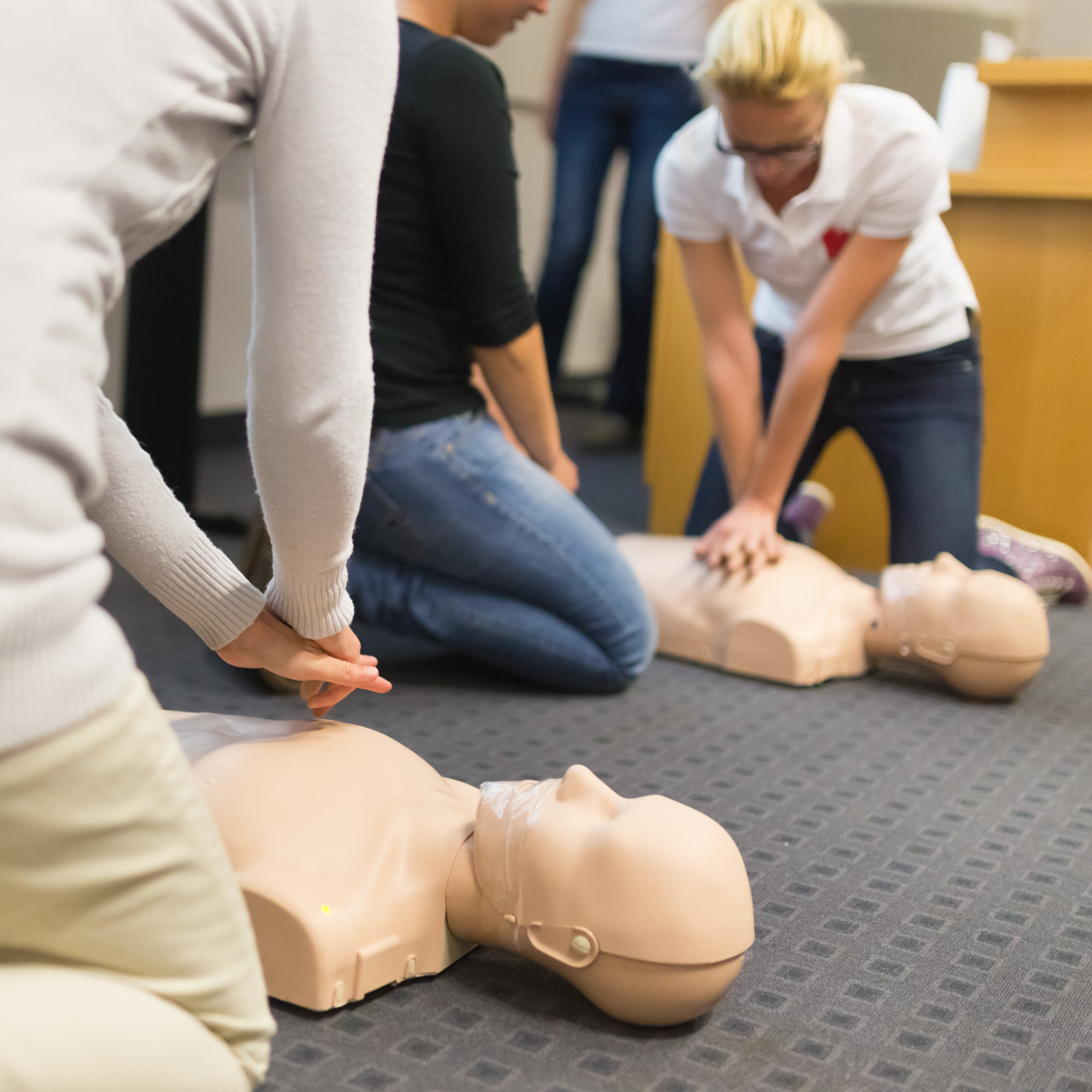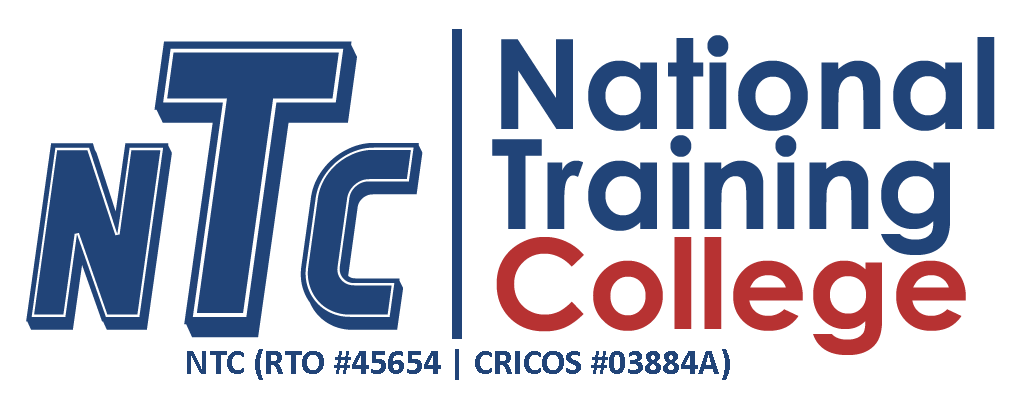- Course Name
- HLTAID011 Provide First Aid (No Online)
- Course Code*
-
HLTAID011 Provide first aidAdditional Accredited Units IncludedHLTAID009 Provide Cardiopulmonary Resuscitation (CPR)HLTAID010 Provide Basic Emergency Life Support (BELS)
- Course AKA Code(s)
- Apply First Aid
Senior First Aid
Workplace Level 2
First Aid Refresher - Course Cost
- $99
- Is the course accredited?
- Yes
- Course Duration
- 6 Hours Face-to-Face
- Available Discounts
- Group Booking Discounts Available

HLTAID011 Provide First Aid
At National Training College we cover all the skills and knowledge required to provide a first aid response to a casualty in line with first aid guidelines determined by the Australian Resuscitation Council (ARC), the Australian Children’s Education and Care Quality Authority (ACECQA) and other leading Australian national peak clinical bodies.
Workplace first aiders are required to undergo and complete a nationally accredited first aid training course such as National Training College’s HLTAID011 Provide First Aid. Upon successful completion of our course you, you will receive a Statement of Attainment or first aid certificate which can improve your opportunities in securing a new job or meeting the requirements of your existing position.
Our accredited HLTAID011 Provide First Aid course includes how to respond to many common medical emergencies including the treatment of Asthma, how to use the DRSABCD protocol, the use of an EpiPen for critical anaphylaxis emergencies, how and when to use an AED or defibrillator, plus much more.
Upon completion of the National Training College’s HLTAID011 Provide First Aid course you will be equipped with skills and confidence you need to act calmly and decisively as a first aid responder in a medical emergency.
This course covers the following Accredited Units of Competency
- HLTAID009 Provide Cardiopulmonary Resuscitation (CPR)
- HLTAID010 Provide Basic Emergency Life Support
- HLTAID011 Provide First Aid
Covid-19 Precautions
At The National Training College, your health and safety is our first priority. Measures to control infection and COVID-19 safe practices are in practice across all our training facilities. Please contact us and reschedule your training if you feel unwell, experience any symptoms or have been in close contact with a COVID-positive case. Please email us at [email protected] for further information.
No Online Workbook or E-learning Required
National Training College has created an efficient, effective, and convenient learning experience for everyone where the stress of online learning is minimised by the creation of a self-paced and self-directed mandatory pre-course learning requirements. Before attending the 6-hour face-to-face classroom session participants must complete a short mandatory pre-course quiz and bring it with them on the day. The amount of time spent completing the mandatory pre-course learning requirements will vary depending on each participant’s existing first aid knowledge and experience and may impact on the overall duration of the course between participants, based on their existing knowledge and experience.
Course Delivery
6 Hour Face-to-Face Training & Assessment
National Training College uses practical training and required knowledge to deliver the HLTAID003 Provide First Aid course face-to-face in a classroom in six hours. Participants of the course are assessed using the following assessment methods:
- Practical demonstrations – Through interactive simulations and role-playing scenarios participants will have the opportunity to demonstrate the actions they would take in the event of a real medical emergency.
- Incident reports – Participants will be required to prepare verbal incident reports and/or assist in the preparation of incident reports (e.g. first aid reports).
- Knowledge assessments – Participants will be tested on their understanding of course principles through short answer quizzes and multiple-choice questions.
First Aid Training Requirements
In order to successfully meet all of National Training College’s HLTAID011 Provide First Aid course requirements participants must:
- Be at least 14 years of age. Participants under 18 years of age need to present the enrolment form signed by a parent or guardian.
- Be able to deliver verbal incident reports and/or supply information needed to prepare an incident report (e.g. first aid report).
- Demonstrate the ability to communicate in an effective and assertive manner in an incident (e.g. give the casualty handover).
- Show they can effectively read, interpret and apply guidelines and protocols in emergency situations (e.g. reading and following Australian Resuscitation Council guidelines to ensure casualty safety).
- Be able to perform uninterrupted single rescuer CPR (5 cycles of both compression and breaths) for at least 2 minutes on an adult manikin placed on the floor.
- Be able to perform interrupted single rescuer CPR (5 cycles of both compression) for at least 2 minutes on an infant manikin placed on a firm surface.
Course Fees
$99 (can vary – check our DAILY DEALS)
Course Times
National Training College runs HLTAID011 Provide First Aid courses 7 days a week in many locations from 9:00am to 3:00pm. (Frequency may vary).
Or talk to use to book workplace training where we come to you.
First Aid Certificate
National Training College prides itself on offering its course participants high quality training and excellent customer service which does not end once the classroom session is over. We do our best to ensure that all candidates who have successfully completed our HLTAID011 Provide First Aid (including HLTAID010 Provide Basic Emergency Life Support (BELS) and HLTAID009 Provide Cardiopulmonary Resuscitation (CPR)) receive a Nationally Accredited First Aid Certificate on the same day or within 24 hours of completion (Terms and Conditions apply).
USI Requirements
All students undertaking a Nationally Registered training course in Australia must have a valid a Unique Student Identifier (USI). USI’s only need be created once, and the number generated is yours for life. So, if have completed any formal study since 2015 it is likely that you may already have a USI that you can use. Obtaining a USI is free and takes less than 5 minutes. To create a USI or search the USI Registry if you have forgotten yours click HERE.
First Aid Training Content Covered
Whilst full and complete course details can be found by downloading our course PDF HERE some of the core skills covered in the course include:
✓ DRSABCD
✓ How to perform CPR on adults and infants
✓ How to operate an Defibrillator known as a AED (Automated External Defibrillator)
✓ How to use an EpiPen to treat anaphylaxis
✓ First Aid response for bleeding, burns and fractures
✓ Management of medical emergencies such as heart attacks, strokes, asthma, anaphylaxis, seizures, diabetes and febrile convulsions
✓ Management of medical emergencies such as snake/spider bites, poisons and choking
✓ Identification and management of hyperthermia (heat stroke) and Hypothermia, heat exhaustion and dehydration
✓ Assessing and moving a sick or injured person you Control of infectious diseases
✓ Legal responsibilities of a first aider
Practical Skills and Assessment Workshop Include:
The participant will show the ability to complete tasks outlined in the criteria of this unit, manage tasks, and manage contingencies in the context of the job role.
Practice and assessment will be completed has completed the following tasks in line with State/Territory regulations, first aid codes of practice, first aid guidelines determined by the Australian Resuscitation Council (ARC) and other Australian national peak clinical bodies and workplace or site procedures:
- managed, in line with ARC guidelines, the unconscious, breathing casualty including appropriate positioning to reduce the risk of airway compromise
- managed, in line with ARC guidelines, the unconscious, non-breathing adult, including:
- performing at least 2 minutes of uninterrupted single rescuer cardiopulmonary resuscitation (CPR) (5 cycles of both compressions and ventilations) on an adult resuscitation manikin placed on the floor
- following the prompts of an automated external defibrillator (AED) to deliver at least one shock
- demonstrating a rotation of single rescuer operators with minimal interruptions to compressions
- responding appropriately in the event of regurgitation or vomiting
- managed, in line with ARC guidelines, the unconscious, non-breathing infant, including:
- performing at least 2 minutes of uninterrupted single rescuer CPR (5 cycles both compressions and ventilations) on an infant resuscitation manikin placed on a firm surface
- managed casualties, with the following:
- anaphylaxis
- asthma
- non-life-threatening bleeding
- choking
- envenomation, using pressure immobilisation
- fractures, dislocations, sprains and strains, using appropriate immobilisation techniques
- minor wound cleaning and dressing
- nosebleed
- shock
- responded to at least one simulated first aid incident contextualised to the candidate’s workplace or community setting, where the candidate has no knowledge of the casualty’s condition prior to starting treatment, including:
- identifying the casualty’s illness or injury through history, signs and symptoms
- using personal protective equipment (PPE) as required
- providing appropriate first aid treatment
- conveying incident details to emergency services or advising casualty on any required post incident action
- providing an accurate verbal and written report of the incident
- reviewing the incident.
Knowledge Evidence
Demonstrated knowledge required to complete the tasks outlined in elements and performance criteria of this unit:
- guidelines and procedures including:
- ARC guidelines relevant to the provision of first aid
- first aid guidelines from Australian national peak clinical bodies
- potential incident hazards and risk minimisation processes when providing first aid
- infection control procedures, including use of standard precautions and resuscitation barrier devices
- requirements for currency of skill and knowledge
- first aid codes of practice
- appropriate workplace or site procedures relevant to the provision of first aid
- contents of first aid kits
- legal, workplace and community considerations including:
- duty of care requirements
- own skills and limitations
- consent and how it relates to the conscious and unconscious casualty
- privacy and confidentiality requirements
- awareness of potential need for stress management techniques and available support for rescuers
- considerations when providing CPR, including:
- upper airway and effect of positional change
- appropriate duration and cessation of CPR
- appropriate use of an AED (defibrillator)
- safety and maintenance procedures for an AED
- chain of survival
- how to access emergency services
- techniques for providing CPR to adults, children and infants including:
- how to recognise that a casualty is unconscious and not breathing normally
- rate, ratio and depth of compressions and ventilations
- correct hand positioning for compressions
- basic anatomy, physiology and the differences between adults, children and infants relating to CPR
- signs, symptoms and management of the following conditions and injuries:
- allergic reaction
- anaphylaxis
- asthma
- non-life-threatening and life-threatening bleeding
- burns
- cardiac conditions, including chest pain
- choking
- diabetes
- drowning
- envenomation – all current treatments
- eye injuries
- fractures, dislocations, strains and sprains
- head, neck and spinal injuries
- hypothermia
- hyperthermia
- minor wounds
- nose-bleed
- poisoning
- seizures
- shock
- sharps injuries
- stroke
